Hollyhock House
1921 – Frank Lloyd Wright
4808 Hollywood Boulevard – map
Declared: 1/4/63
First, two things about the pictures. One, no photography’s allowed inside the house. Two, a lot of the definitive shots of Hollyhock House out there are of the building’s broad westside. The day I was there, though, this area was off limits as the ground was all torn up having been the staging area for the site’s recent reconstruction. It should be re-landscaped by the end of the year.
During World War I, oil heiress Aline Barnsdall hired Frank Lloyd Wright to build for her a bunch of buildings for a giant art colony on her 36-acre Olive Hill estate in Hollywood. Included in the plans were a home for herself and her little daughter, Sugartop, “two secondary residences, a theater, a director's house, a dormitory for actors, studios for artists, shops, and a motion picture theater.” (Had things turned out the way they were supposed to, you’d see artists’ garrets along Hollywood Boulevard where there’s now the Barnsdall Art Park parking lot.) Wright by this time was already famous for all those prairie houses, but this was his first Los Angeles commission and only his second in Southern California (the first being the George C. Stewart House (Butterfly Woods, 1909) up in Montecito, now lived in by writer T.C. Boyle).
Wait. Sugartop?
South side
AB and FLW didn’t get on well. Part of the problem was Wright was spending a lot of his time traveling back and forth to Tokyo where he was building the Imperial Hotel. The upshot was just three buildings were completed – Barnsdall’s home and the two Studio Residences, A and B. However, he did get some not-too-shabby help on the projects, mainly from Rudolf Schindler. Richard Neutra and Wright’s son, Lloyd, also get points for assists.
Aline Barnsdall wasn’t too happy with the way things turned out, and, also citing financial concerns, she moved out of the house after about a year and a half. (She did visit over the years, staying in Studio Residence B. She passed away in that house in 1946. That building has since been demolished.) Hollyhock House was donated to the city in 1927, and was used for a few years by the California Art Club. After some years of deterioration, the house was renovated by Lloyd Wright for the USO. Another rehabilitation project kicked off in the mid-70s.
Hollyhock House reopened in 2005 after a five-year renovation and seismic retrofit. Before I took the tour of Hollyhock House, I watched Restoring the Romanza – The Rehabilitation of Hollyhock House, a documentary video playing in the art gallery. (Shhh – you can watch it below.)
What’s the deal with the name? Aline loved hollyhock flowers and asked Frank to incorporate them into the design. He did, throughout, but only after coming up with his own geometric take on them. (That’s a close-up of his version of the flower in the shot at the top of this post.)
Courtyard and pool, which fed the water around the indoor fireplace
Courtyard, south side
Courtyard, north side
Besides seeing the hollyhock theme, you’ll notice the dark-green color outside and inside the house as a nod to the site’s previous life as an olive grove. (Speaking of the inside. Cool: there are both built-in cabinets for Aline’s record collection and a moat around the fireplace. Not-so-cool: be prepared to do a lot of stooping.) All the original glass in the house was provided, for just a few hundred dollars, by Judson Studios. The Los Angeles-based company is still involved with the site today.
Residence A and the Barnsdall Art Park itself are also L.A. HCMs, Nos 33 and 34.
A lot of the information above, including that quote in the second paragraph, can be found on the Hollyhock House's official website. Today, Hollyhock House is operated by the city’s Cultural Affairs Department and is open for tours.
You really should visit Barnsdall Art Park, if only for the expansive view of the Hollywood Hills and Orange Traffic Cone No. 318.

Traffic cone, Hollywood Hills
Two final notes. Just last Wednesday, April 4, Hollyhock House, along with a couple other FLW projects, was designated a National Historic Landmark. Also, today, 4/9/07, is the 48th anniversary of Frank Lloyd Wright’s death. I’m sure if he were alive today, he’d still be an S.O.B. But! he’d be a 139-year-old S.O.B.
Up next: Rocha House
Up next: Rocha House
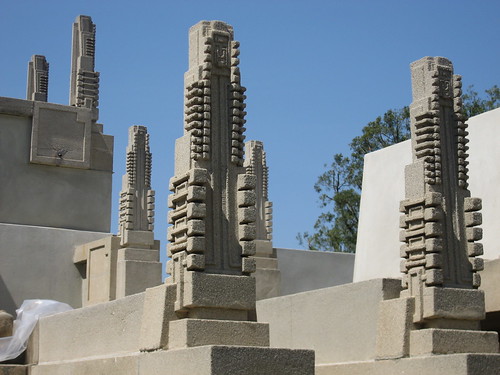

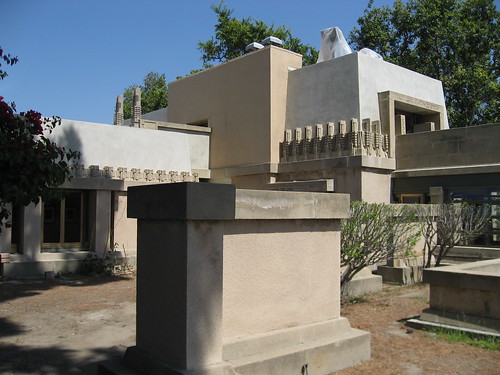
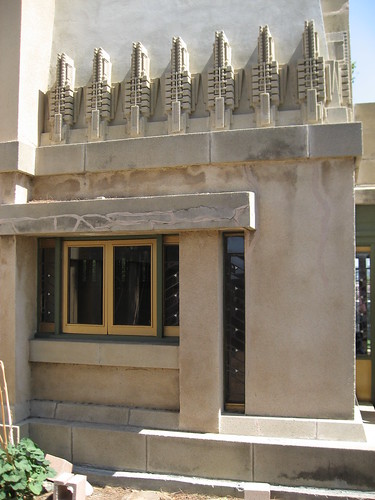
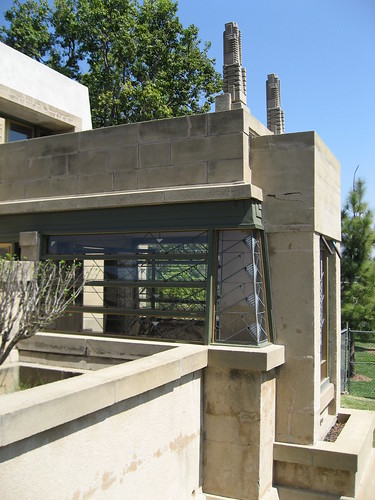
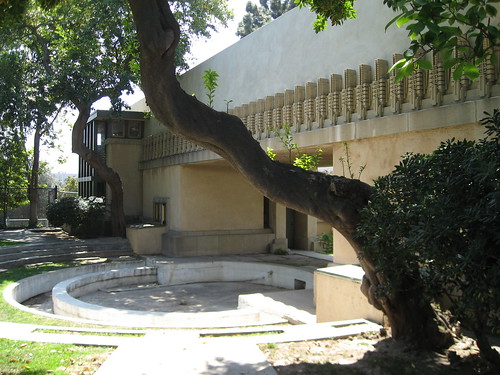

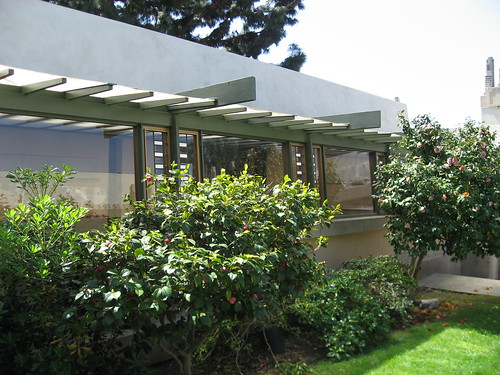
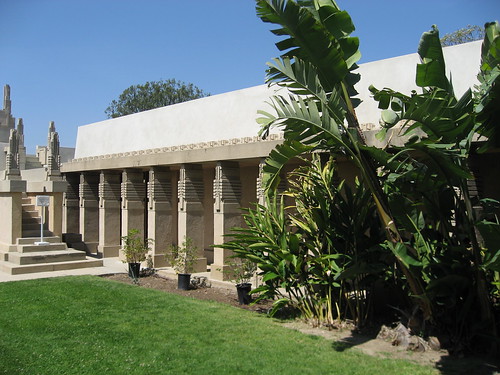
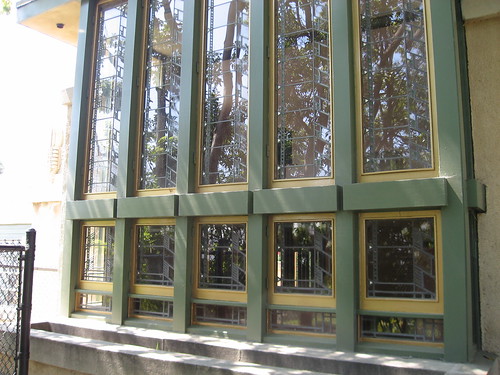

1 comment:
Outstanding post once again. Hollyhock House is now on the list.
My favorite part:
"You really should visit Barnsdall Art Park, if only for the expansive view of the Hollywood Hills and Orange Traffic Cone No. 318."
Orange Traffic Cone No. 318. Lol, Floyd.
Post a Comment